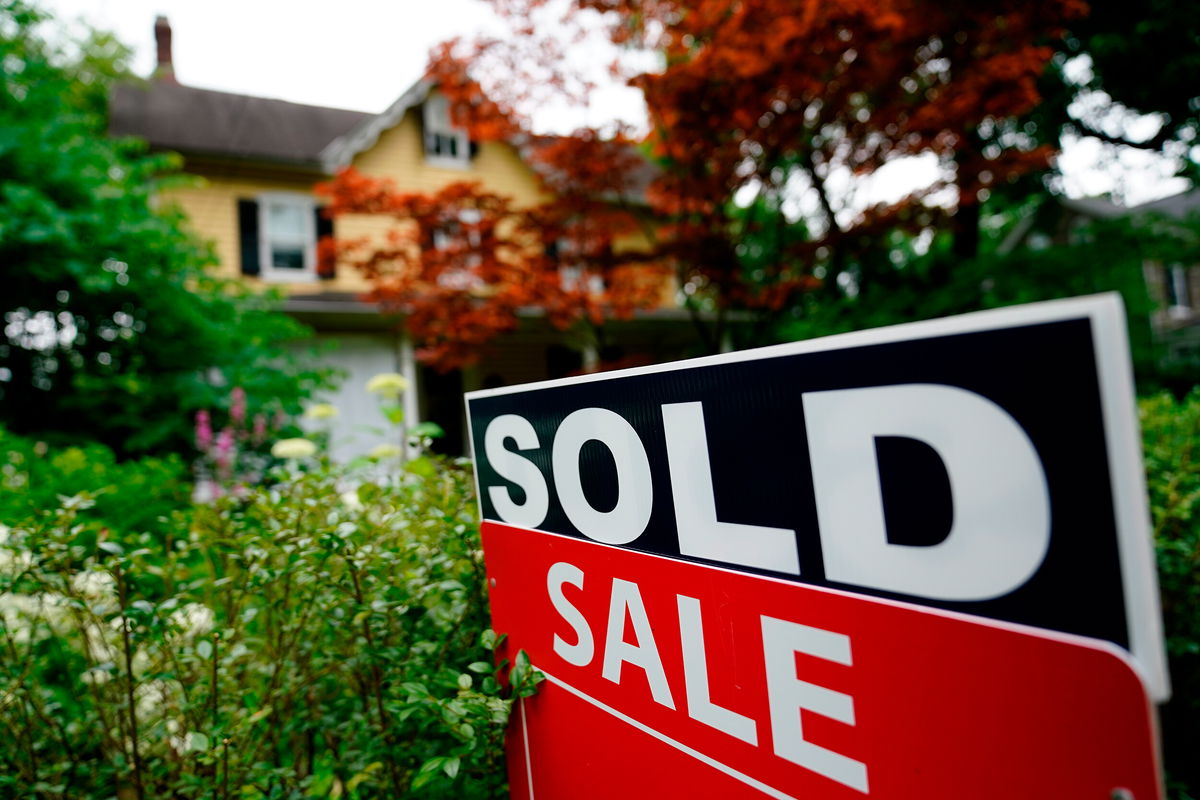Home sales dropped 20% in August from a year ago

Home sales declined for the seventh month in a row in August as higher mortgage rates and stubbornly high prices pushed prospective buyers out of the market. A sale sign stands outside a home in Wyndmoor
By Anna Bahney, CNN Business
Home sales declined for the seventh month in a row in August as higher mortgage rates and stubbornly high prices pushed prospective buyers out of the market.
Sales of existing homes — which include single-family homes, townhomes, condominiums and co-ops — were down 19.9% from a year ago and down 0.4% from July, according to a report from the National Association of Realtors.
Sales in August were at their weakest level since May 2020, which was an anomaly because that was in the early days of the pandemic lockdown. Setting that aside, sales last month were the weakest they have been since November 2015.
A year-over-year decline in sales was seen in all price categories, with steeper drops at the lower end, and in all regions, dropping the most in the West where affordability challenges are greatest.
Home prices continued to climb during the month, although it was the lowest year-over-year increase since June 2020. The median home price was $389,500 in August, up 7.7% from a year ago, according to the report. That’s down from the record high of $413,800 in June. The price increase marks more than a decade of year-over-year monthly gains.
“The housing sector is the most sensitive to and experiences the most immediate impacts from the Federal Reserve’s interest rate policy changes,” said Lawrence Yun, NAR’s chief economist. “The softness in home sales reflects this year’s escalating mortgage rates.”
The average rate on a 30-year fixed-rate mortgage reached 6% last week, the highest it has been since 2008 and roughly double what it was a year ago.
Inventory remains tight
With sales dropping only modestly from July, the slowdown in the market may stabilize, Yun said, assuming mortgage rates stabilize.
“But all bets are off if mortgage rates go higher,” said Yun. “Homeowners who may have typically made a move — because of a new job or another child or to be in a different school district — may stay in their current home because they love their low interest rates they already locked in during the past two and a half years.”
The “staying put” effect is keeping the inventory of homes for sale tight. While it might seem like a drop in sales would mean a glut of homes on the market, fewer people are bringing their homes to market. And new listings are going really fast, moving from listing to contract in 16 days.
Inventory of homes for sale at the end of August was down 1.5% from July and unchanged from the previous year, at 1,280,000 units. And homes are still selling fast. At the current sales pace it would take 3.2 months to sell all that inventory, identical to July and up from 2.6 months a year ago, because there are fewer sales. A balanced market, Yun said, is closer to a 4- to 5-month supply.
“Inventory will remain tight in the coming months and even for the next couple of years, increasing the need for more new-home construction to boost supply,” said Yun.
Home prices are cooling off
The market typically sees a seasonal drop of about 1% a month in home prices during the summer, but this year those monthly drops are bigger — down 3.6% in July from June, and a 2.4% drop in August from June, though national home prices are still higher than a year ago.
Some local markets may be seeing year-over-year declines, Yun said.
But with the rising cost to finance a home, buyers have to look at much lower priced homes to keep payments affordable.
If you bought a $300,000 home last year with an interest rate at 3%, the monthly payment would have been $1,265, said Yun. In order to keep that same monthly payment, they’d have to look at a home priced 30% lower today.
“That is not appealing to many buyers,” he said.
In August, first-time buyers were responsible for 29% of sales. That’s the same as last month and a year ago.
“The number of first-time buyers is not moving up,” said Yun. “The share should be above 30% or closer to 40%. But first time buyers are really struggling, given the current affordability challenges.”
The-CNN-Wire
™ & © 2022 Cable News Network, Inc., a Warner Bros. Discovery Company. All rights reserved.